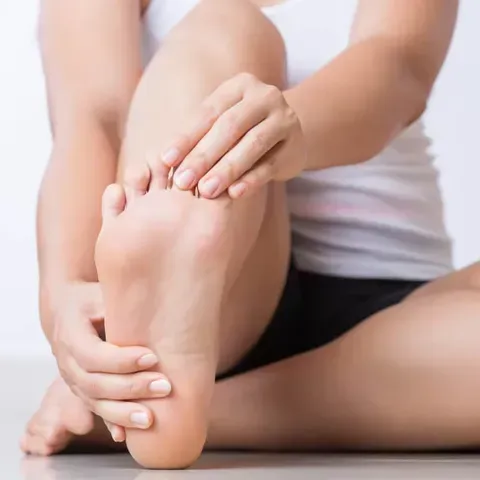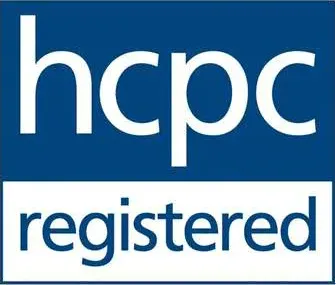
The Hidden Cause Behind Achy Feet: Understanding the Mechanics of Foot Pain
The Hidden Cause Behind Achy Feet: Understanding the Mechanics of Foot Pain
Foot pain is one of the most common musculoskeletal complaints affecting people in Knowle, Solihull, and across the UK, yet it remains widely misunderstood. Many assume aching feet result simply from age or ill-fitting shoes. In reality, foot pain frequently arises from complex interactions between bones, joints, muscles, and connective tissues—often influenced by how we move and bear weight.
At Gait & Rehab in Knowle, we specialise in uncovering these hidden causes, ensuring treatment addresses the root problem rather than just masking symptoms.
Why Do Feet Hurt? The Science Behind Foot Pain
Your feet are intricate structures, comprising 26 bones, 33 joints, and over 100 muscles, tendons, and ligaments. This remarkable architecture enables stability, shock absorption, and propulsion during walking or running. Pain occurs when these structures become overloaded or fail to function optimally.
Common Mechanisms Behind Foot Pain
1. Degenerative Joint Changes (Osteoarthritis)
Over time, cartilage in foot joints wears down, leading to bone-on-bone contact and osteophyte formation.
This process restricts joint movement and causes pain during weight-bearing activities
Osteoarthritis most commonly affects the first metatarsophalangeal joint (big toe), but can also involve midfoot and lesser toe joints
2. Tendon and Ligament Stress
Key structures like the posterior tibial tendon and plantar fascia support your arch and aid propulsion
Repetitive stress or altered mechanics lead to microtears, inflammation, and persistent pain
This is particularly common in active individuals and those with biomechanical imbalances
3. Muscle Weakness and Atrophy
Intrinsic foot muscles control toe movement and maintain arches
These muscles may weaken due to disuse or compensatory gait patterns
Weak muscles reduce shock absorption, increasing load on joints and connective tissues
4. Altered Biomechanics and Gait Patterns
Even small differences in ankle, knee, or hip movement change how forces travel through your foot
Repeated abnormal loading stresses joints and soft tissues, leading to chronic foot pain
Our advanced gait analysis identifies these patterns
5. Secondary Effects of Inflammation
Chronic joint or soft tissue stress causes swelling, stiffness, and impaired proprioception
This further affects balance and gait, creating a cycle of discomfort
The Role of Weight-Bearing and Movement in Foot Pain
Foot pain often intensifies after prolonged activity or standing because weight-bearing amplifies mechanical stress across foot joints and soft tissues. While movement is essential for maintaining joint nutrition and mobility, compromised joints experience worsening pain with repeated stress.
At Gait & Rehab, we emphasize controlled, guided movement to maintain joint health while avoiding excessive strain—a key principle in our treatment approach.
Our Clinical Assessment: Why Comprehensive Evaluation Matters
Accurate diagnosis of foot pain requires a thorough assessment. At our Knowle clinic, we provide:
Physical Examination: Observing joint range of motion, tenderness, and signs of deformity
Advanced Gait Analysis: Evaluating force distribution during walking or running using our Footscanner technology
Muscle Strength Testing: Identifying weaknesses contributing to pain
Pressure Mapping: Measuring load patterns through your foot
Imaging Referrals(when needed): X-rays or MRI to reveal cartilage loss, osteophytes, or soft tissue injury
This comprehensive approach allows us to identify primary pain sources—whether joint degeneration, tendon overload, muscle weakness, or a combination of factors.
Evidence-Based Management Options for Foot Pain
Most foot pain can be effectively managed without surgery. Our treatment strategies include:
1. Targeted Exercise Programs
Strengthening intrinsic foot muscles, calves, and lower limb muscles for improved support
Stretching tight tissues to enhance joint range of motion and reduce stress
Personalized rehabilitation plans
2. Mechanical Interventions
Custom 3D-printed orthotics (Phits)to redistribute load across joints and soft tissues
Supportive footwear recommendations allowing normal foot function while reducing pain
Biomechanical corrections tailored to your gait
3. Advanced Adjunct Therapies
Shockwave therapy for chronic tendinopathy and plantar fasciitis
Laser therapy for heel pain and tissue healing
Corticosteroid injections in selected cases to reduce joint inflammation
4. Education and Self-Management
Activity modification guidance to reduce joint stress while maintaining mobility
Strategies to monitor pain, swelling, and fatigue
Long-term foot health maintenance
Take the First Step Toward Pain-Free Walking
Foot pain rarely has a single simple cause. It typically results from a combination of joint changes, soft tissue stress, and altered biomechanics. At Gait & Rehab in Knowle, we focus on understanding the mechanical and structural causes of your pain, delivering treatments that are personalized, clinically effective, and long-lasting.
Serving Knowle, Dorridge, Balsall Common, and Solihull
If you've been struggling with persistent foot discomfort, book a comprehensive MSK consultation with gait analysis today. Our advanced technology and expert podiatry care will uncover the hidden causes—the first step toward walking comfortably again.
Contact Gait & Rehab today or book your £115 MSK consultation with gait assessment to start your journey to pain-free feet.




